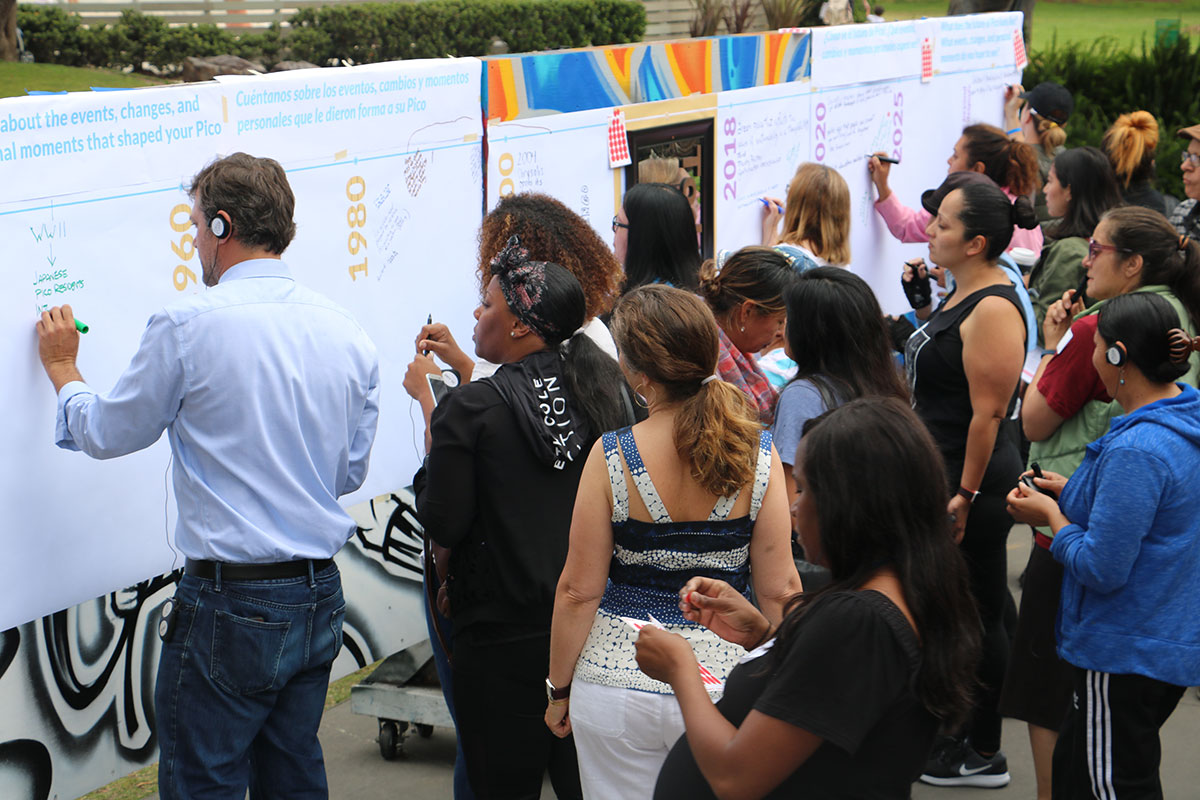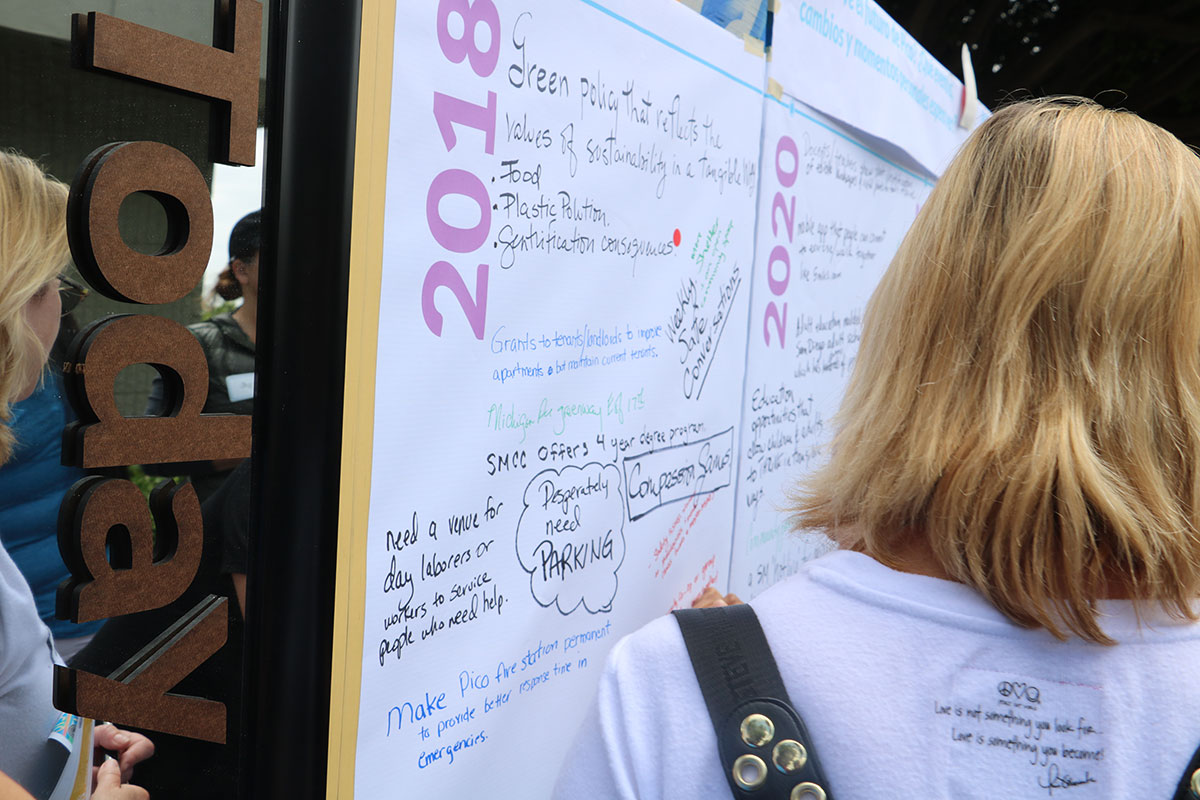
Santa Monica: Wellbeing In Action
juin 13, 2019 — Highlight
Santa Monica’s Wellbeing Index was premised on a bold idea: what if we went beyond traditional performance measures and used data to genuinely understand the people we serve in order to more effectively respond to community needs? We have always believed that government exists to safeguard and improve people’s lives. But we, like many other cities, needed to improve our ability to understand the real strengths and challenges faced by our residents – regardless of race, culture, age, or other socioeconomic factors. The Wellbeing Index was our way of putting data about people’s every day lives front and center in our decision making.
The Index began with a framework that was organized into six key areas: Outlook, Community, Health, Learning, Place and Planet, and Economic Opportunity. Each area includes metrics that reflect how the public perceives life in Santa Monica, not how our governments departments are structured. So for example, Place and Planet measures everything from green cover, to sidewalk connectivity, air quality, opportunities to learn about the natural environment, mobility choices, and more- work that spans multiple city departments as well as some things that are managed by entities outside of government.
We chose that approach because when you’re a resident, all of these things are what inform your feelings about the place where you live- for example, if people live within walking distance of useful goods and services but don’t feel safe walking there, they aren’t going to take advantage of that community benefit. The framework of our wellbeing index was intentionally designed to spur collaborative approaches to challenges that face cities, and brings the people who work on these issues, both inside and outside City Hall, together to co-create solutions rather than taking a department by department approach.

The data that is analyzed in the wellbeing framework starts with traditional and familiar government sources – like our crime rate, census data, health data etc. and the like. It is combined with subjective measures of wellbeing that come from our Wellbeing Survey, which documents people’s report of their own behaviors and includes measures of resilience, financial security, physical activity, eating, sleeping, availability of friends to count on in a crisis, etc. We also include data from social media, looking at the kind of things people are talking about on Twitter and other social media channels to understand public sentiment around key issues in our community. All of that information is analyzed through the wellbeing framework and results in hundreds of findings that help better understand the cumulative impact of all the things that are a part of living in Santa Monica.
The Index shows us that Santa Monica as a whole is a happy, prosperous city, with 70% of our residents reporting that they feel happy and we have persistently high rates of volunteering, a measure of commitment to the community. However, disaggregating the data in the Index has revealed and quantified equity issues in the City. We know that while African American and Latinx residents have the highest sense of community and engagement in learning respectively, they have also have the lowest overall wellbeing in the City. Trend analysis of resident wellbeing over the last two years has shown that economic worries are increasing, with the percent of parents who believe their children will be able to afford to live in Santa Monica as adults decreasing from 48% to 38%. The Index has also illuminated the gaps between intention and impact of City policies. While we have award winning farmers markets located across the city, we learned that less than a quarter of our residents eat the recommended amount of fruits and vegetables per day, and physical activity has declined by 10% since the first Index was released in 2015.

So what do we do with this data? We take action. We launched a Pico Wellbeing Project to concentrate city resources and staff attention in the neighborhood with the lowest median income to begin the move the dial on equity disparities in wellbeing. We created a Wellbeing Microgrants program, to empower residents to take ownership of issues they believe they can impact, by granting individuals $500 for small scale creative action focused on equity, social isolation & inclusion. We piloted a program to better understand residents’ activity levels using donated Fitbits. We used the data from the devices to inform decisions around programming and helping us understand which resources were being underutilized by residents due to low awareness. Most importantly, the wellbeing framework was adapted with an increased emphasis on environmental sustainability, public safety, and governance for the City’s new reimagined budget process, and for our new performance management program, to reorient all of our resources, both human and financial, towards to the outcomes identified in the framework.
Our work in wellbeing has demonstrated that understanding people, and how they are doing can be measured. And what can be measured can be improved. Defining the drivers of a good life and getting more effective at solving the big issues of our time is an imperative. It will take new forms of civic engagement and creative partnerships, along with continued focus on using data to truly deliver for our residents. Santa Monica is proud to be well on our way, with the Wellbeing Index.